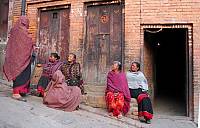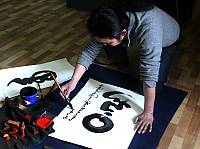The Committee,
- Takes note that Croatia has nominated Lacemaking in Croatia for inscription on the Representative List of the Intangible Cultural Heritage of Humanity, described as follows:
At least three distinct traditions of Lacemaking in Croatia persist today, centred on the towns of Pag on the Adriatic, Lepoglava in northern Croatia and Hvar on the Dalmatian island of the same name. Pag needle-point lace was originally used to make ecclesiastical garments, tablecloths and ornaments for clothing. The process involves embellishing a spider web pattern with geometrical motifs and is transmitted today by older women who offer year-long courses. Lepoglava bobbin lace is made by braiding thread wound on spindles, or bobbins; it is often used to make lace ribbons for folk costumes or is sold at village fairs. An International Lace Festival in Lepoglava celebrates the art every year. Aloe lace is made in Croatia only by Benedictine nuns in the town of Hvar. Thin, white threads are obtained from the core of fresh aloe leaves and woven into a net or other pattern on a cardboard background. The resulting pieces are a symbol of Hvar. Each variety of lace has long been created by rural women as a source of additional income and has left a permanent mark on the culture of its region. The craft both produces an important component of traditional clothes and is itself testimony to a living cultural tradition.
- Decides that, from the information provided in Nomination File 00245, Lacemaking in Croatia satisfies the criteria for inscription on the Representative List, as follows:
R.1: Traditional lacemaking of the Croatian regions of Pag, Lepoglava and Hvar is an essential element of the identity of the communities concerned, transmitted from generation to generation;
R.2: Inscription of the element would contribute to the visibility of intangible cultural heritage in the regions concerned and internationally, as well as promote respect for cultural diversity and creativity;
R.3: The nomination describes various current and planned safeguarding measures, including legal protection, documentation and inclusion in school education, with a priority on transmission;
R.4: The nomination process was carried out with the full consent and participation of the local communities and institutions, such as clubs and associations; the consent of the latter is included in the nomination;
R.5: The three types of lacemaking presented in the nomination are inscribed in the Register of Cultural Goods of the Republic of Croatia maintained by the Ministry of Culture.
- Inscribes Lacemaking in Croatia on the Representative List of the Intangible Cultural Heritage of Humanity.















